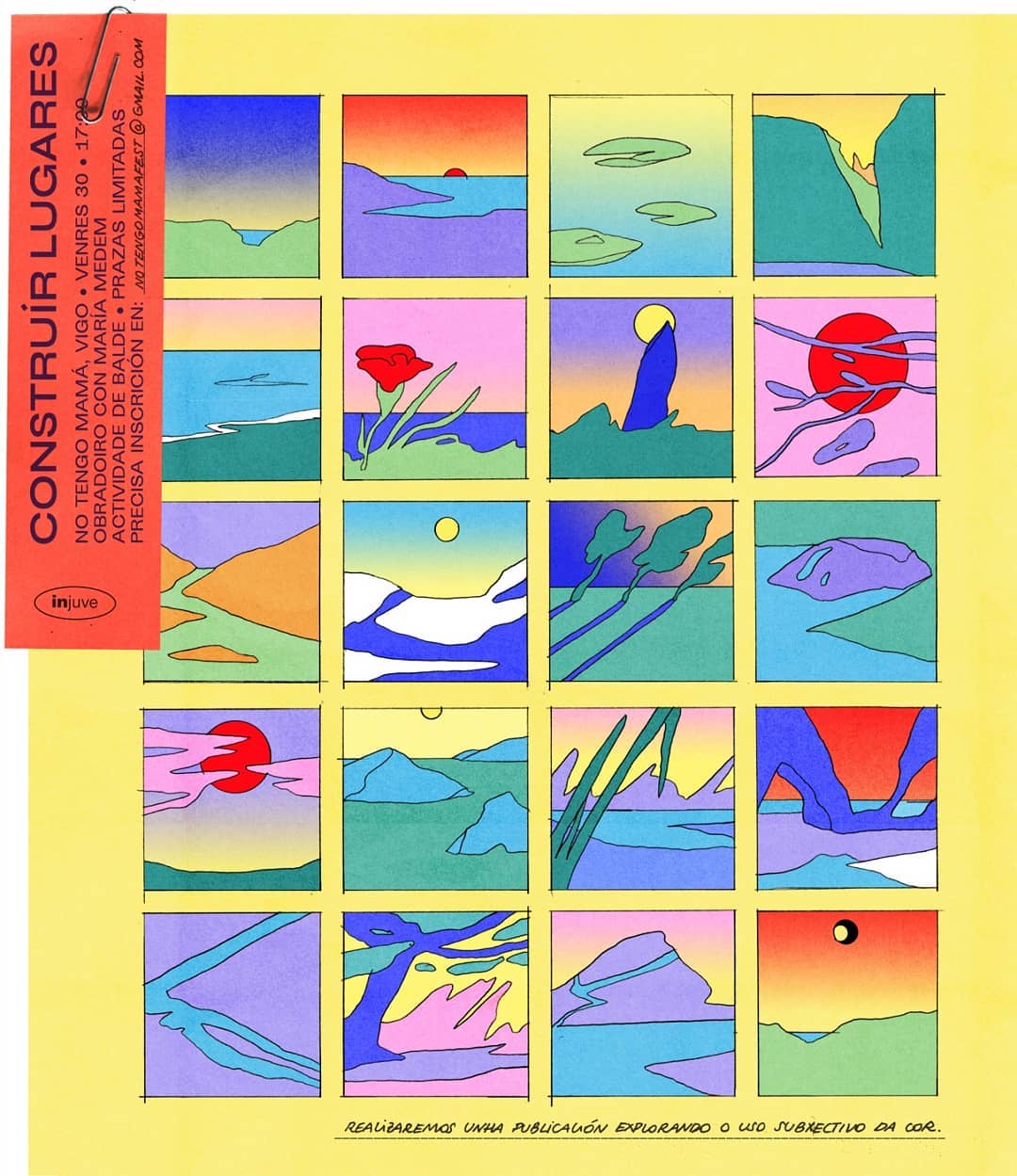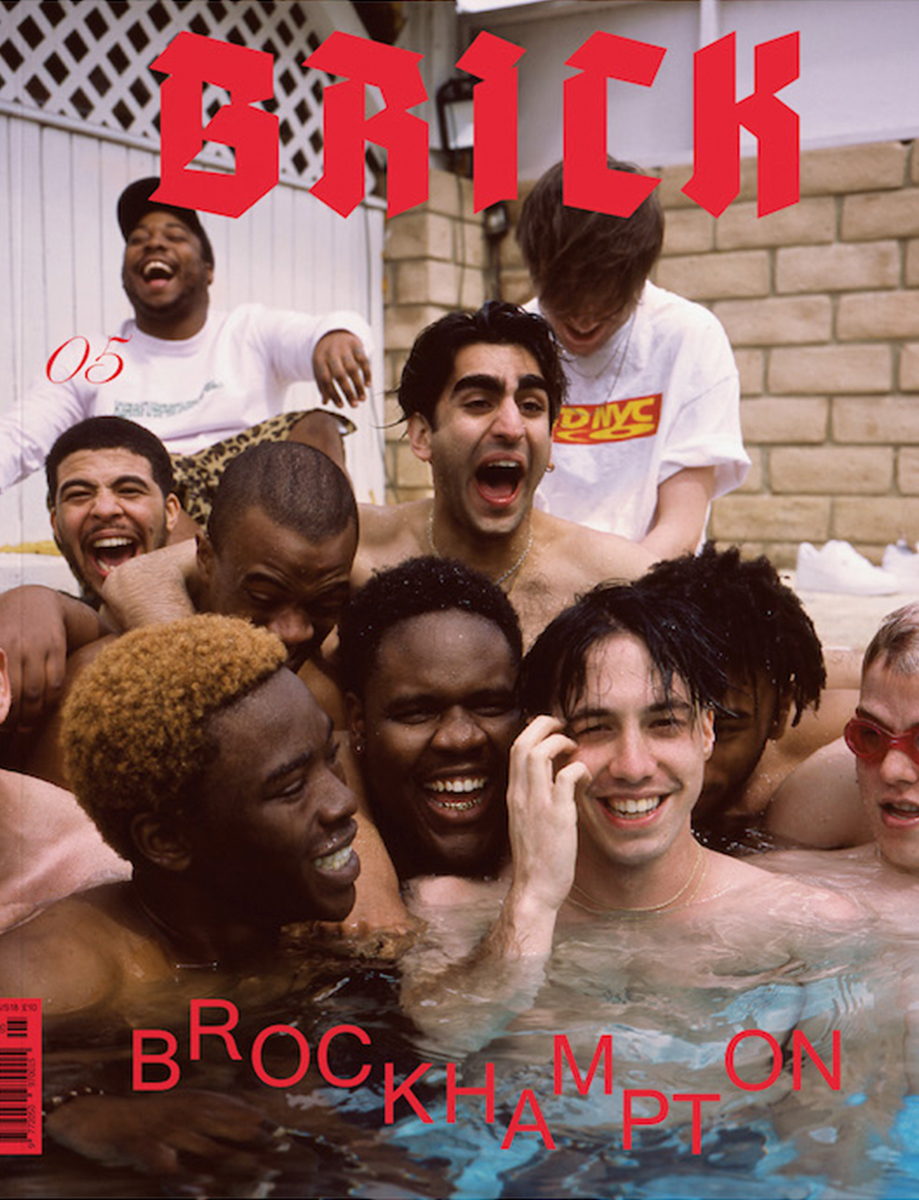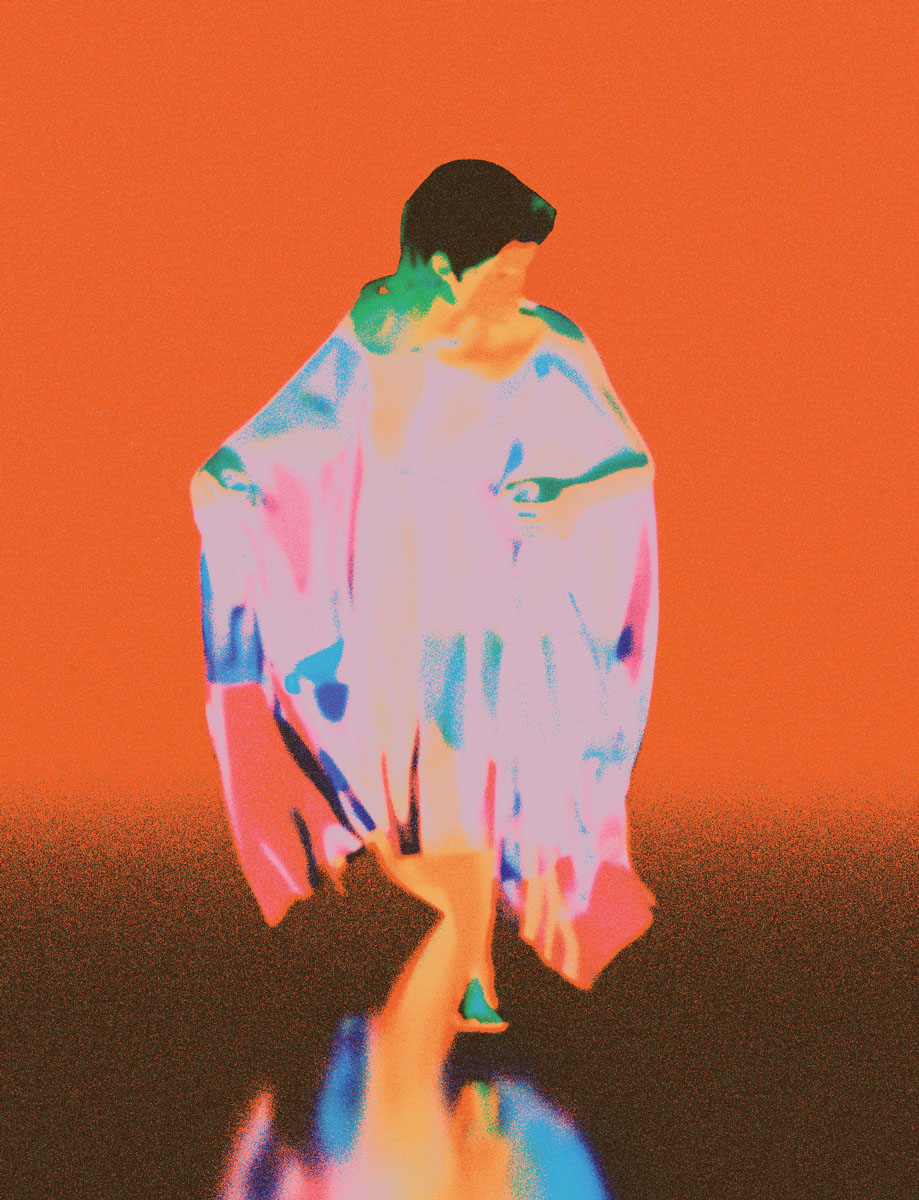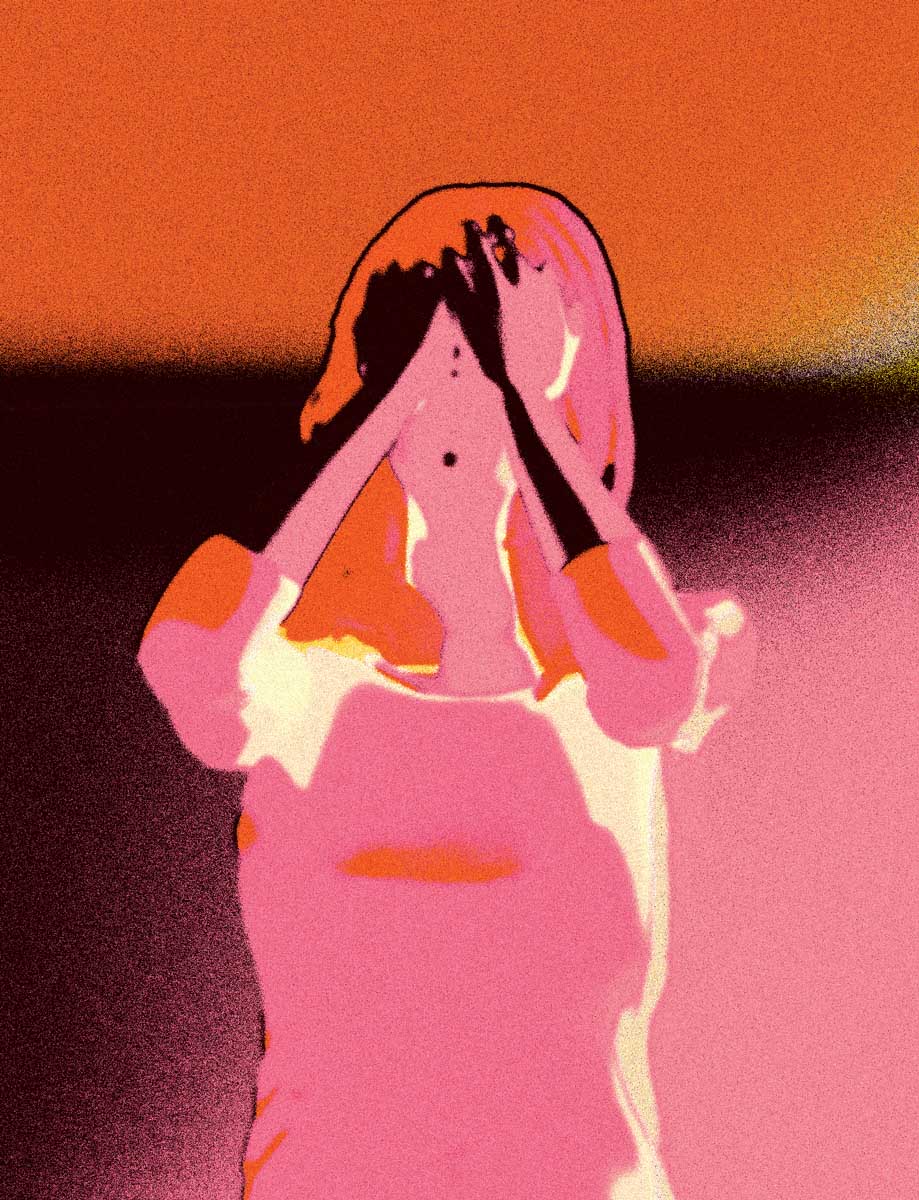KRIS ANDREW SMALL on Always Collaborating
Kris Andrew Small is an artist based in Syndey, Australia.
What is it about collaboration that interests you so much?
I just kept finding designers and artists that I thought made amazing work. I wanted to work with them and fortunately, they wanted to work with me too. Really I’ve just always thought it was the best way to meet people from around the world, it meant that then when I would go travelling say, I would have people to hang out with everywhere. It really was as naive as that, I was never approaching this as, “Wow cool this will get me more followers.”

You get to see your work in a different light
I think in part also I was inspired by the fact that I know lots of musicians, and they were always working with producers and vocalists from halfway across the world. I’ve always thought that was so cool, and I wanted to be able to do the same thing with art. There’s something about having the input of another artist, you get to see your work in a different light, and with their take on it.
Why did you want to work with Kelly Anna and Annu Kilpeläinen?
They are both really good friends from way back. Kelly was my first friend when I moved to London so I’ve known her for maybe 10 years or so now. I’ve always loved Kelly and her work is just an extension of her personality, so I find I’m naturally just drawn to it – I love everything she makes. The same goes for Annu! I’ve known Annu for around the same amount of time, and we even lived together for about four years. Again, I love Annu and her work is an extension of her personality too. Annu’s work for me is like an explosion of brain colour (which I find similar to my own work) plus we share a mutual love of cars, so that was an easy one really!
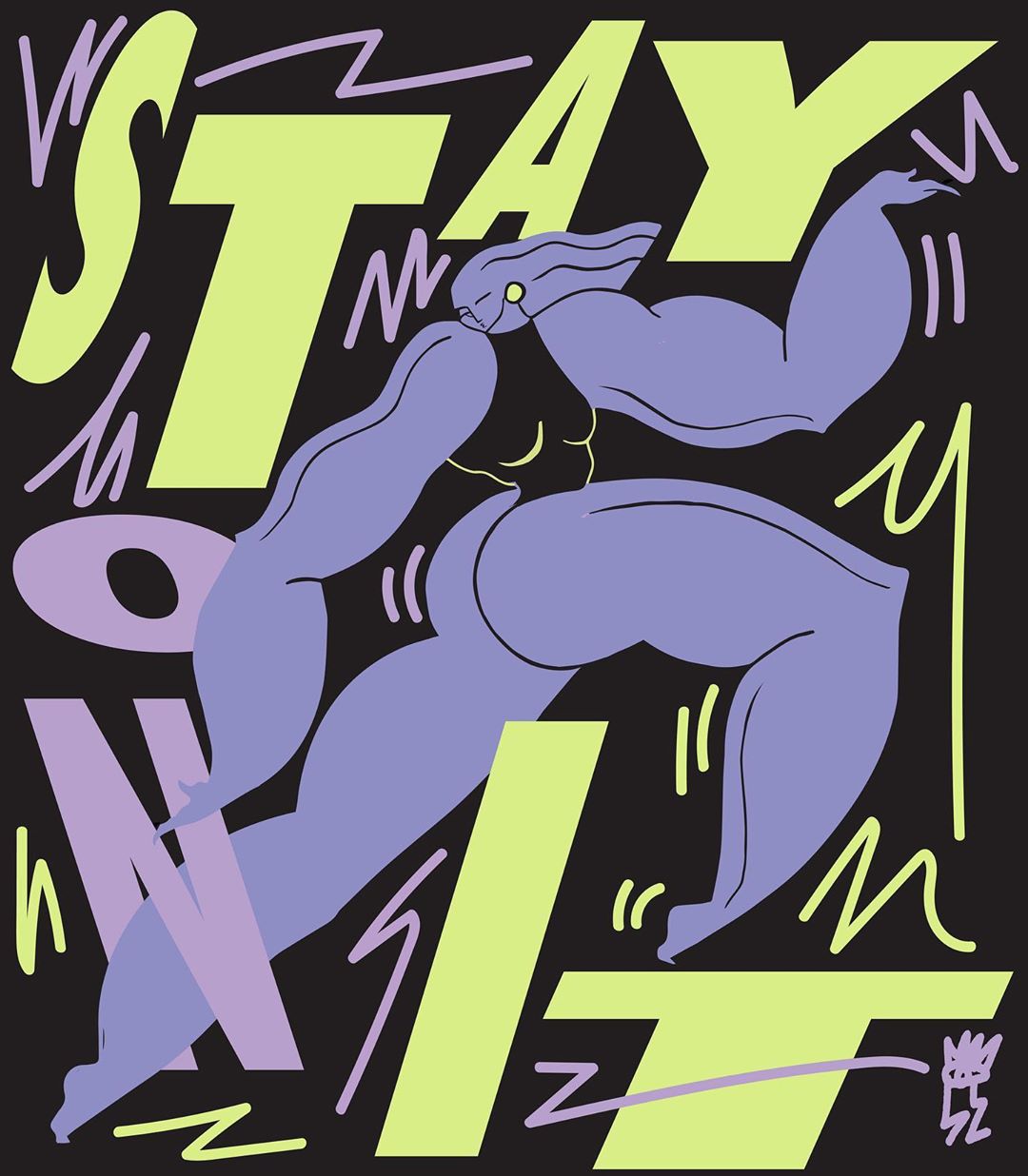
How did you adapt to working with new people, what is your process like?
I always think ping ponging is the best way to collaborate. Basically you both come up with a rough initial concept, then decide who’ll get started with the first part. When they’ve done their bit they send it to you, you add some things then send it back, they add some things, and you keep going like this until you both feel it’s finished! It’s cool, and I think it’s the best way to make a piece of work that truly represents both people’s style.
I always think ping ponging is the best way to collaborate
What tips would you have for anyone else who wants to work with new collaborators?
Just keep finding people whose work you like and reach out to them, this is especially if they’re already your friends. Also, be respectful, people can be very busy and don’t always have the time to work on a collaboration, especially as often this kind of work is not paid (and we all need to make a living!)
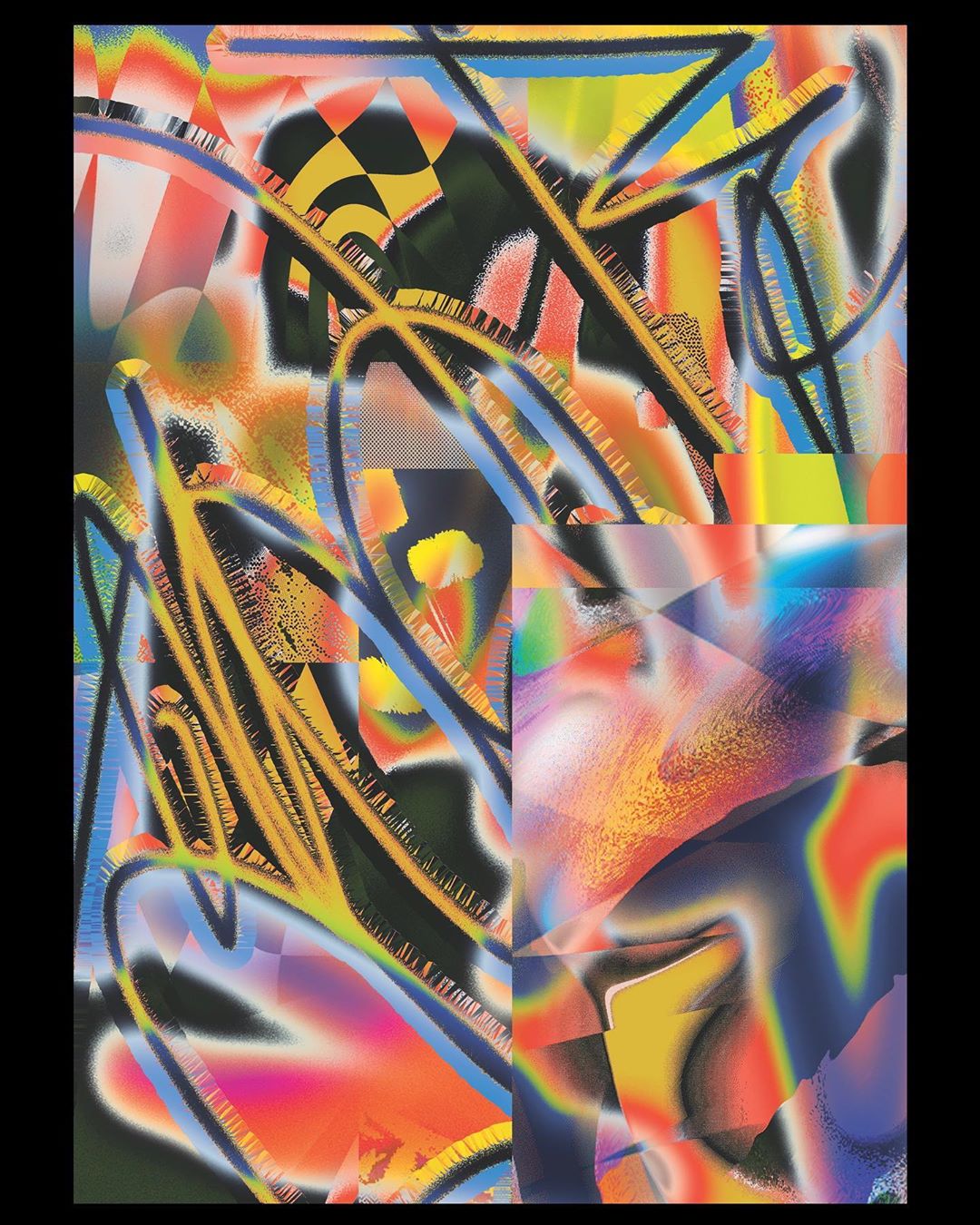
Don’t overthink it or lay down loads of rules, just riff off each other’s work and have fun with it.
Don’t approach it in terms of what you can gain from the situation, be that followers or attention. That’s kind of a depressing mindset, do it because you genuinely want to make work with that person.
What have you learnt by working with different artists?
We are all in the same boat really. We all have the same excitements, let downs, anxieties, etc. The more you surround yourself with people who work in similar fields to you, the easier it is to stay focused and remove a lot of the anxiety that comes with being a freelance artist.
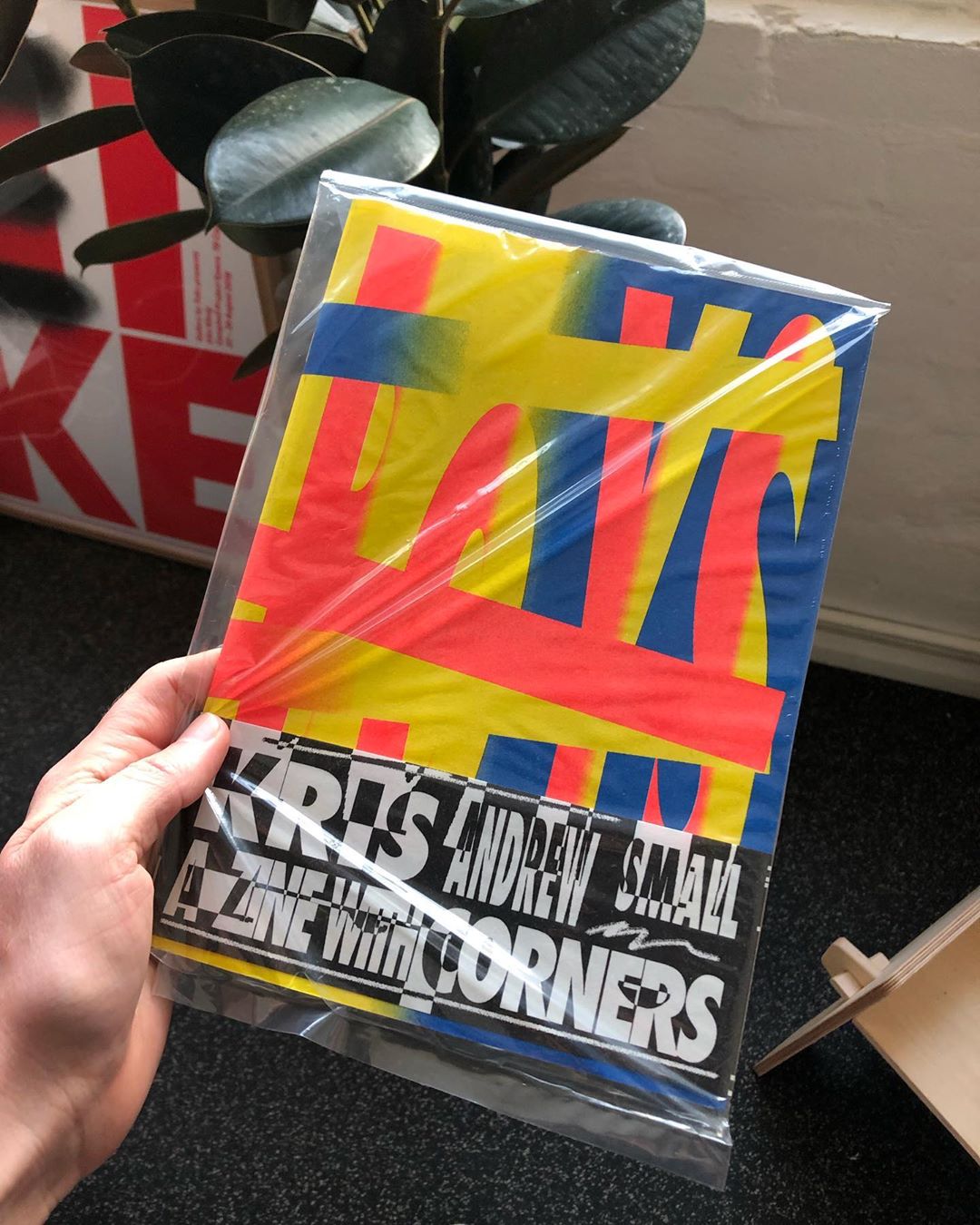
How do you adapt your work for physical formats, like T-shirts?
To be honest, T-shirts were the first thing I ever designed, I had a clothing label that did relatively well while I was still a student so I can kind of draw on that experience. My advice is, like anything, don’t just make a rectangle or a square piece of work and plonk it on a T-shirt. Think about the actual T-shirt, what you want to do with that format and how it might look in the end. Also don’t forget, people have to want to wear it, otherwise there is very little point in making it.
Holly St Clair & Martina Martian On Friendship
Holly St Clair is a London-based illustrator and designer, and Martina Martian is an Australian designer and illustrator.
How did you first become friends?
H: I think we met for the first time at The Jewellery Pop-Up, right? We have a mutual friend in Rosie from Mood Good Jewellery, I had done a collaboration with her last year so went along to support!
M: Then in terms of work, we met up for a sketchbook date, which really turned into eating a large amount of pizza and a brief tour of Brixton. It was lovely!
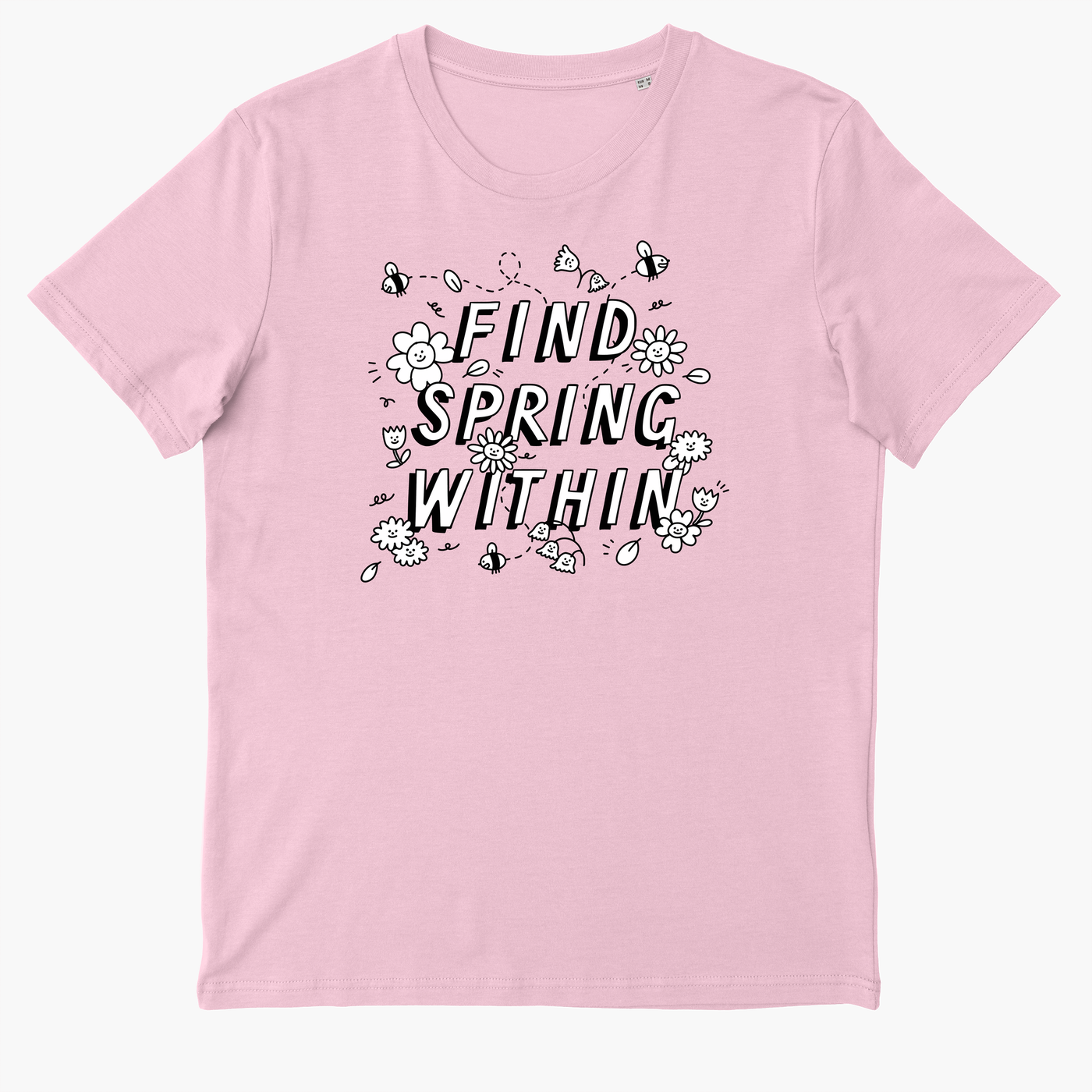
How did you adapt to working together, what is your working process like?
M: For this project, we’d originally have liked to sketch out our ideas in person at a cute cafe, but self-isolation meant we scheduled a Facetime chat instead then DM’d our ideas over Instagram. I’ve had to head back to Australia for a few months so we’ve actually ended up collaborating across the globe… It’s been surprisingly easy! I love the internet.
We’ve ended up collaborating across the globe
H: It’s quite a fun time difference too, Martina gets up as I’m going to sleep so often I’ll wake up to a lovely update. Our process is based on things that I’ve found work from previous collabs; there’s a layering of ideas so we go back and forth. From the outset, we agreed Martina would do lettering in her style and I could draw around it. Then it’s a case of following our noses, chasing that creative gut instinct.
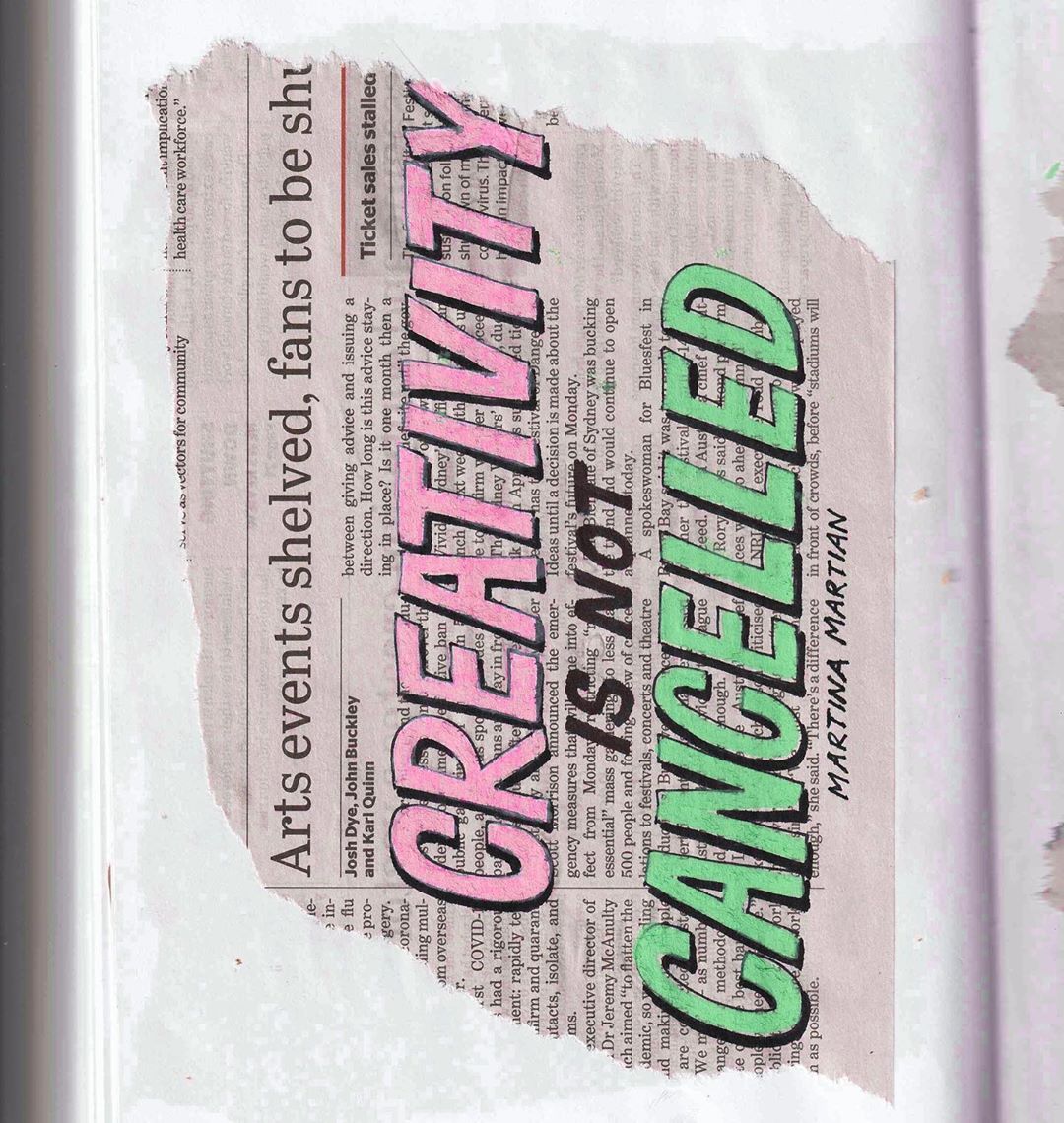
Would you say there’s a distinction between your friendship and working relationship?
M: Our conversations drift between projects and personal life, I guess we keep some distinction by putting all the important work stuff into an email.
H: I don’t remember to do anything unless it’s in an email! I like having this overlap between the personal and the professional. My work, and Martina’s too, in my opinion, comes from a personal place, I can’t really distance myself from that. It’s different when you’re working with a paying client obviously, but the fun thing about working with friends is the blending of two worlds.
What do you think each person brings to the table?
M: I think my strength is in writing quotes, Holly definitely has the uplifting, whimsical drawings side covered.
H: Martina’s lettering is awesome. I also admire her ability to create these sentimental, in a good way, statements. I obviously bring star power. I’m kidding – I bring the whimsy!
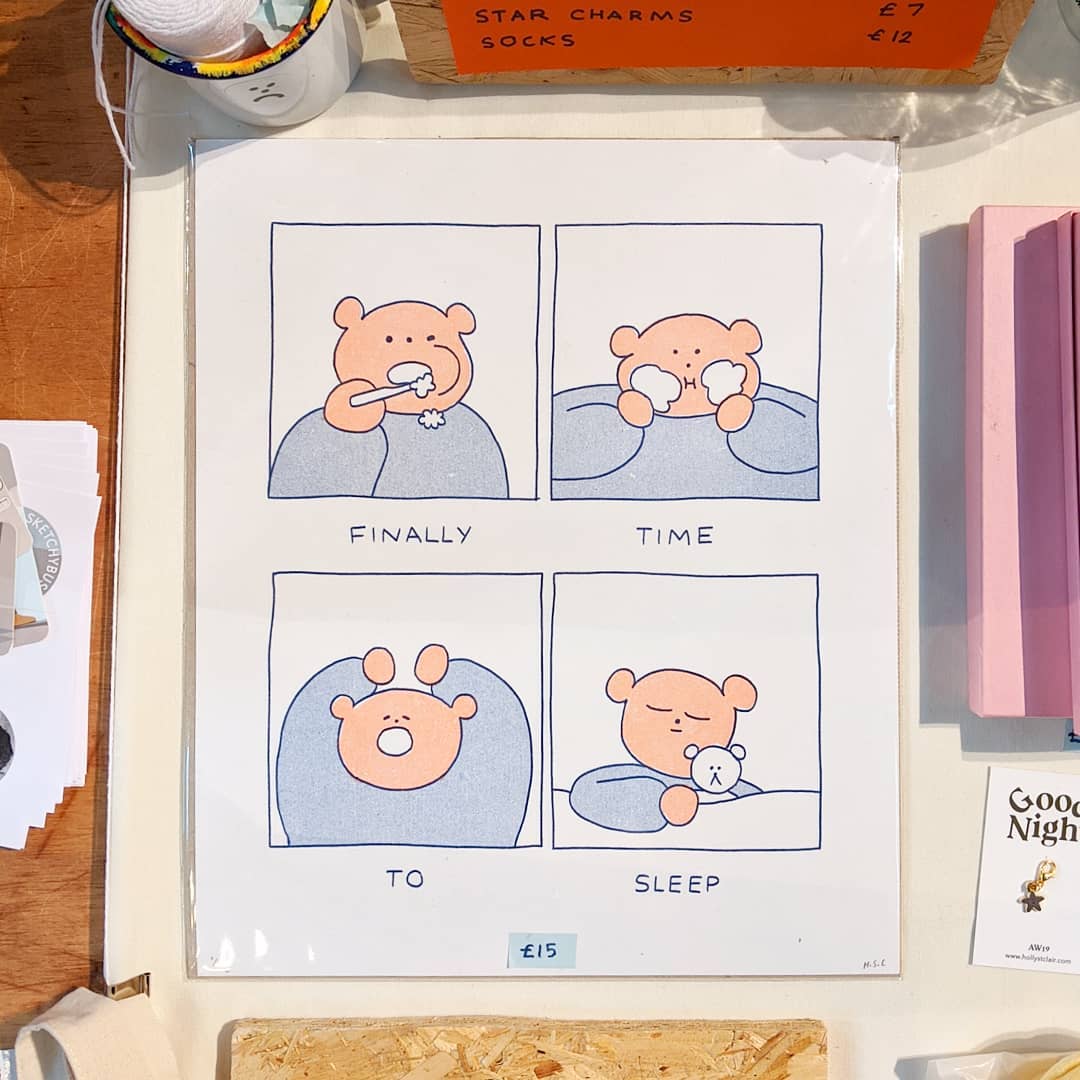
What tips would you have for any other friends setting out to collaborate on a creative project?
M: In general, just make sure everybody involved is getting something out of it, try not to control too much and keep an open mind.
The fun thing about working with friends is the blending of two worlds
H: 100% agree. Let the project take you where it wants to go. I also think it’s important to remember that this is an opportunity to indulge yourself, make something you love with people you love! Also, stick to deadlines you set, it’s easy for personal projects to stall due to procrastination. (I’m very guilty of this!)
How do you adapt your work for physical formats, like T-shirts?
M: I like to keep in mind the function of a T-shirt and where each person will wear it. In this case, the buyer would most likely be wearing our T-shirt while social distancing at home, so we kept that in mind when designing.
H: I’ve learnt that you can’t just slap a picture on a T-shirt and call it a day, you need to remember how it will be worn. I have a Moomin T-shirt that’s my favourite example of this; Moomintroll has his arms outstretched like a conductor, but when I wear it, it looks like I’m being groped by a beloved children’s book character. Said T-shirt has been consigned to the pyjama drawer, but a wear test would have highlighted that issue immediately! Similarly, check how the design looks tucked in or worn under a jacket, that’s why Everpress’ sample service is super useful.
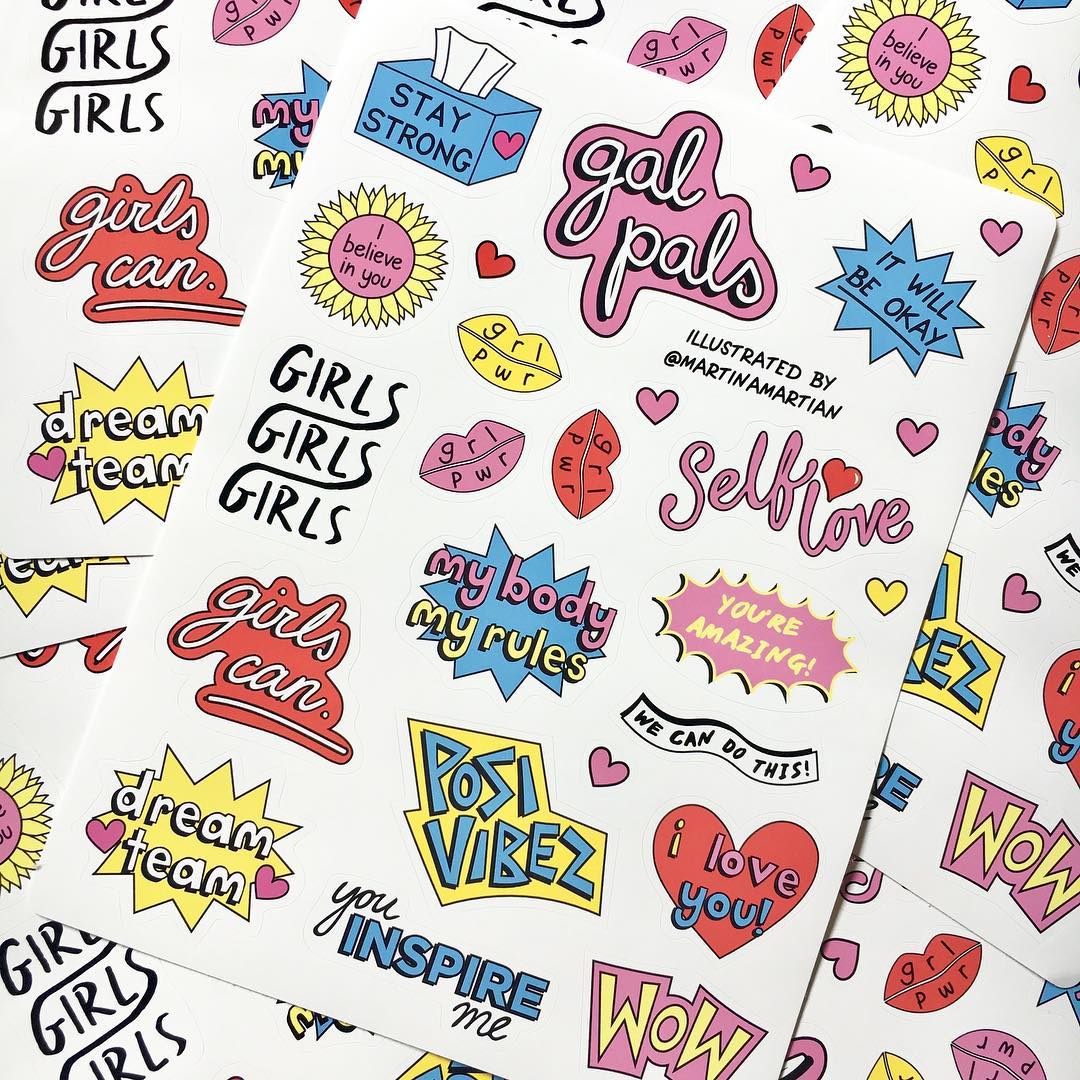
María Medem On Music
María Medem is an illustrator based in Seville, Spain.
How did you first start working with musicians?
I think the first time was when a band from my city (Vera Fauna), who are friends of mine, asked me to illustrate the cover of one of their singles. It was a very cool starting point because I’m confident with them and I felt able to explore my own different approaches to the song, knowing they’d still guide me well. After that, I started making more work for musicians, including Alaskalaska, Jay Som and Bombay Bicycle Club. I’ve also made an animated video clip for Hovvdy.
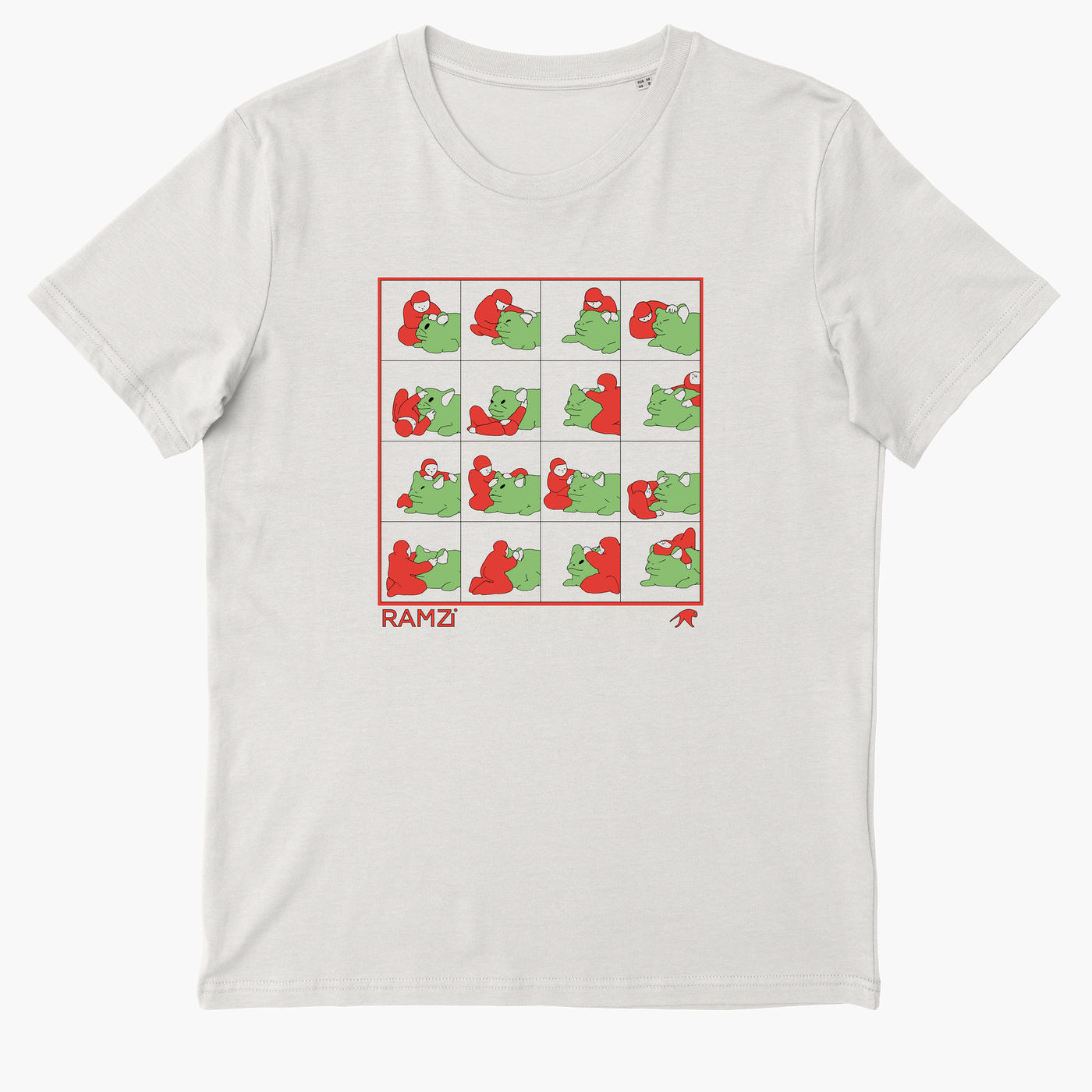
How does working with musicians differ to the rest of your practice?
It’s very different from illustrating an article. Sometimes a musician will come to me with a very clear idea of what they want, and other times they won’t and I’ll get to interpret their music or the album’s concept. One of the big differences I’ve found is that with music I can work through concepts in a more free and abstract way. For me, the atmosphere of an illustration is the main thing here, so my task is to try and reflect the mood of the music somehow.

My task is to try and reflect the mood of the music
What has it been like collaborating with RAMZi?
It was very cool! I’d been listening to their music from way before she contacted me, and actually I’d been playing one of her records while working on a very long commission a couple of weeks before she wrote me, so this felt like a very special coincidence. RAMZi brought a lot of things to the project, the aesthetic of the music and RAMZi universe is very interesting to me, and an element that I carried over to the T-shirt, in particular, was animals. I drew this strange creature, basically a combination of a couple of very weird monkeys, that was totally inspired by the universe she creates with her music.

How did you adapt to working together and what was the working process like?
It’s been a very long process because at the beginning I was going to make the cover of her new record, but then everything took more time than expected and suddenly it was summer and I was on holiday. So we delayed that collaboration and the idea was to use some of the sketches I had made for the cover on another thing. Initially, we’d thought to do a 2020 calendar, but instead, we’ve ended up at our T-shirt, and we’re going to make some more merch together soon. It’s been cool though because we get along really well together.
She’s from Canada and I’m from Spain but we actually ended up meeting each other in person last year in London, totally by chance, because I was doing a book fair and she was DJing there.
What tips would you have for anyone working on a collaboration between a visual creative and musician?
Good communication with the musician is really important. Also don’t be afraid of trying weird or unexpected approaches to the artwork, and send all the sketches that you’ve prepared. It’s happened to me now a couple of times that the sketch I’m the most unsure about, even the one that I think it’s better not to send, ends up being the musician’s favourite.
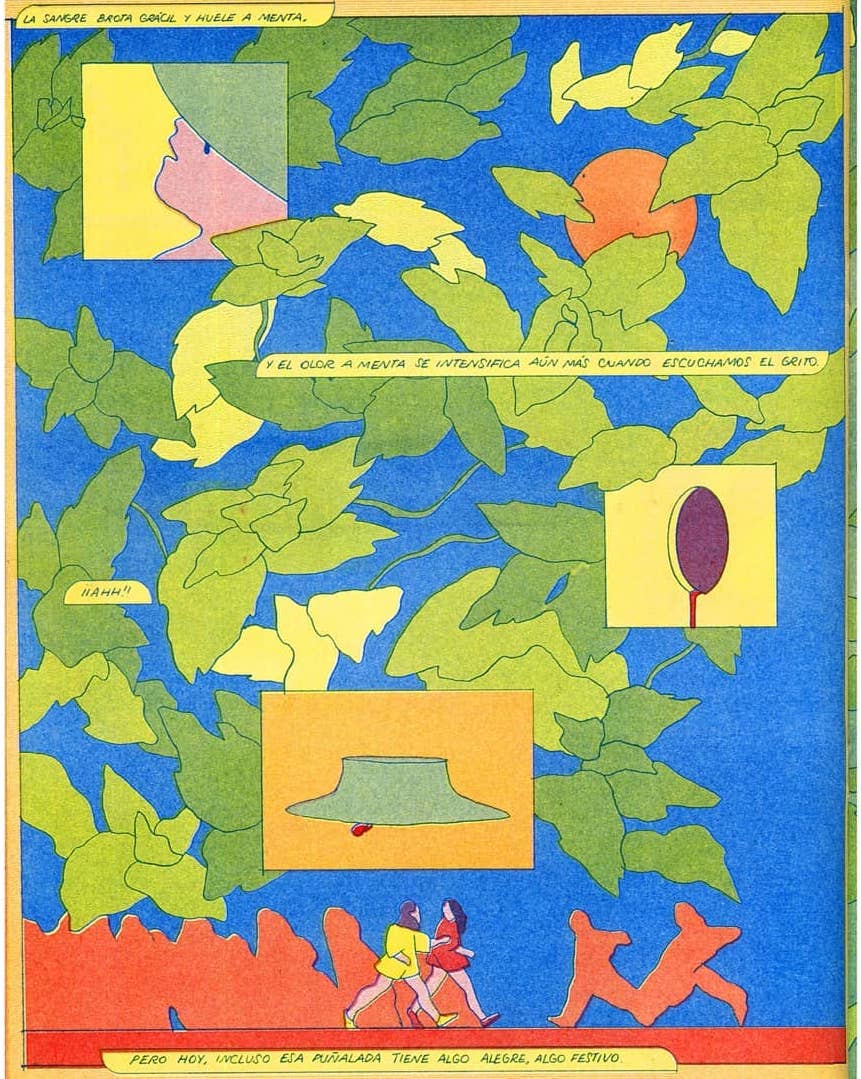
Don’t be afraid of trying unexpected approaches
How do you adapt your work for physical formats, like T-shirts?
When possible I try to make something specifically for the tee, because how a T-shirt is perceived is very different from how a record cover or magazine page is perceived. With T-shirts I also try to use fewer colours than usual because the tees that I like and wear the most have a very restricted palette, plus fewer colours means your T-shirt can be screen printed, which is much cooler!
Poppy Crew & MILES TEWSON On RELATIONSHIPS
Poppy Crew and Miles Tewson are both Bristol-based illustrators.
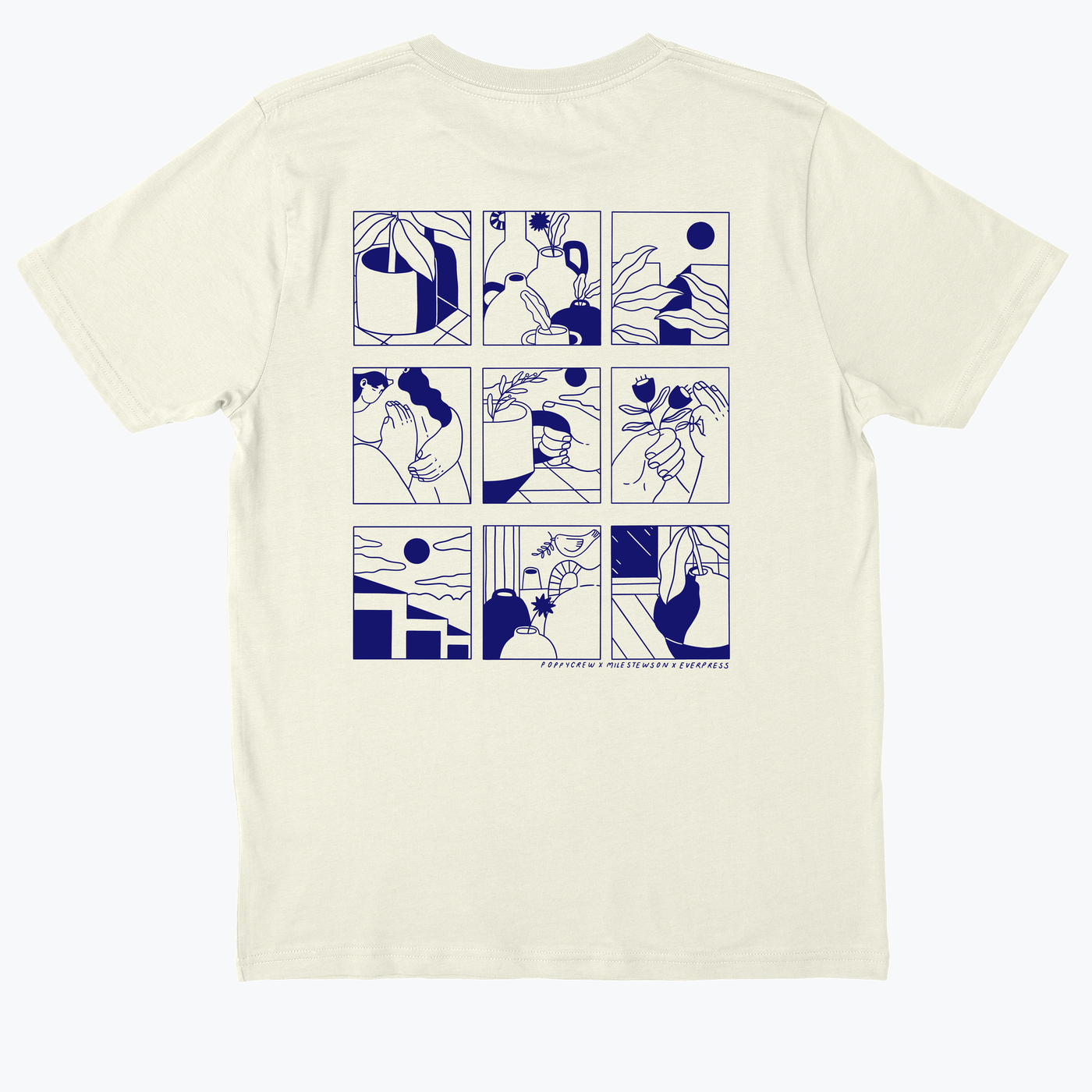
How did your working relationship begin?
P: Our working relationship started at university, where we met in the first term of the illustration degree we’re both on. We’ve been working alongside each other since!
M: Because we had all the same projects to work on throughout the start of our degree and relationship, our working relationship began straight away and slowly grew over the years.
How did you adapt to working together and what is your working process like?
P: We both have quite similar working processes, which is why I think adapting to working on a collaborative project together was quite smooth. For instance, we both rely heavily on sketchbooks to plan and design our initial ideas and we both also turn most of our sketches into finished digital pieces, which is what we did for this T-shirt design!
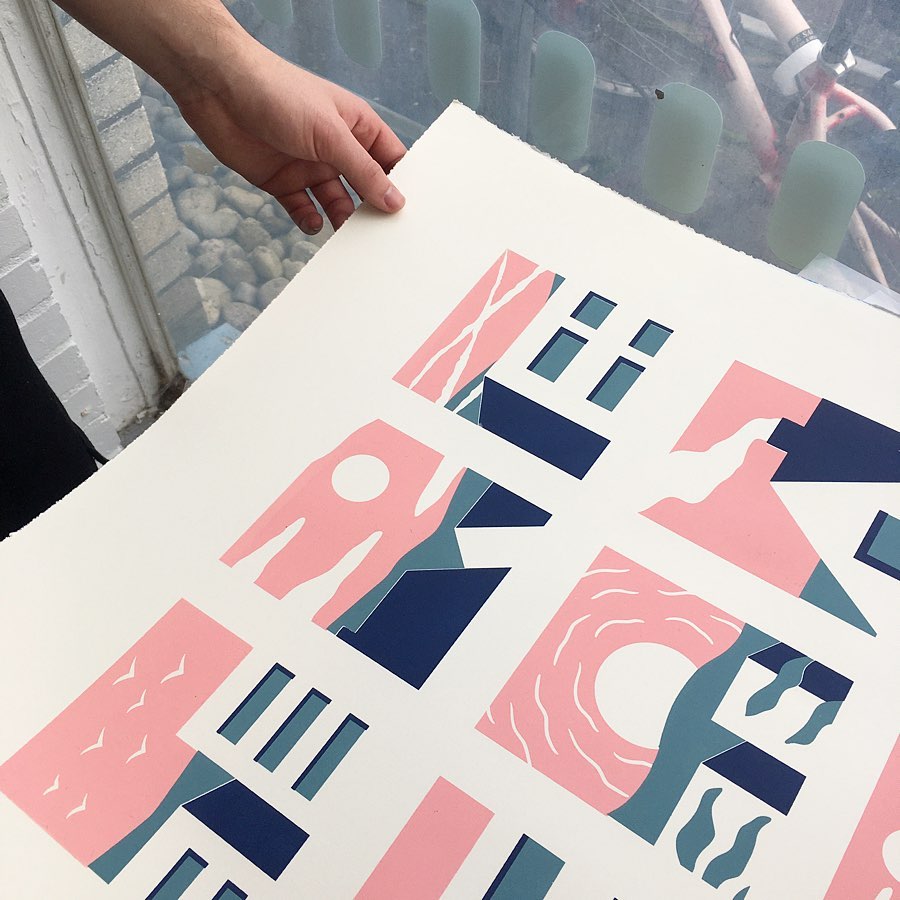
M: We’ve been creating our own individual illustrations and working on our own projects since before we met and still do now, so in this case, it was really exciting being able to adapt our processes to work collaboratively. Like Poppy said, it was actually a really easy transaction because of the similar individual working process we have!
Do you find there’s a separation between your relationship outside of work and inside of work?
P: I think there’s definitely a sense in which our work life and personal life bleeds into one, largely because making art is something we do for fun as well as for work, and this has been the case since before we met. But this means we’re both pretty okay with there being a fine line between the two, and most of the time it doesn’t even really feel like work, which is ideal.
M: I’d add to that that I think it’s important to know when you need to create the separation between work and personal life, which is something we’ve learnt to do over the last couple of years. It’s about finding a balance that works for you both!
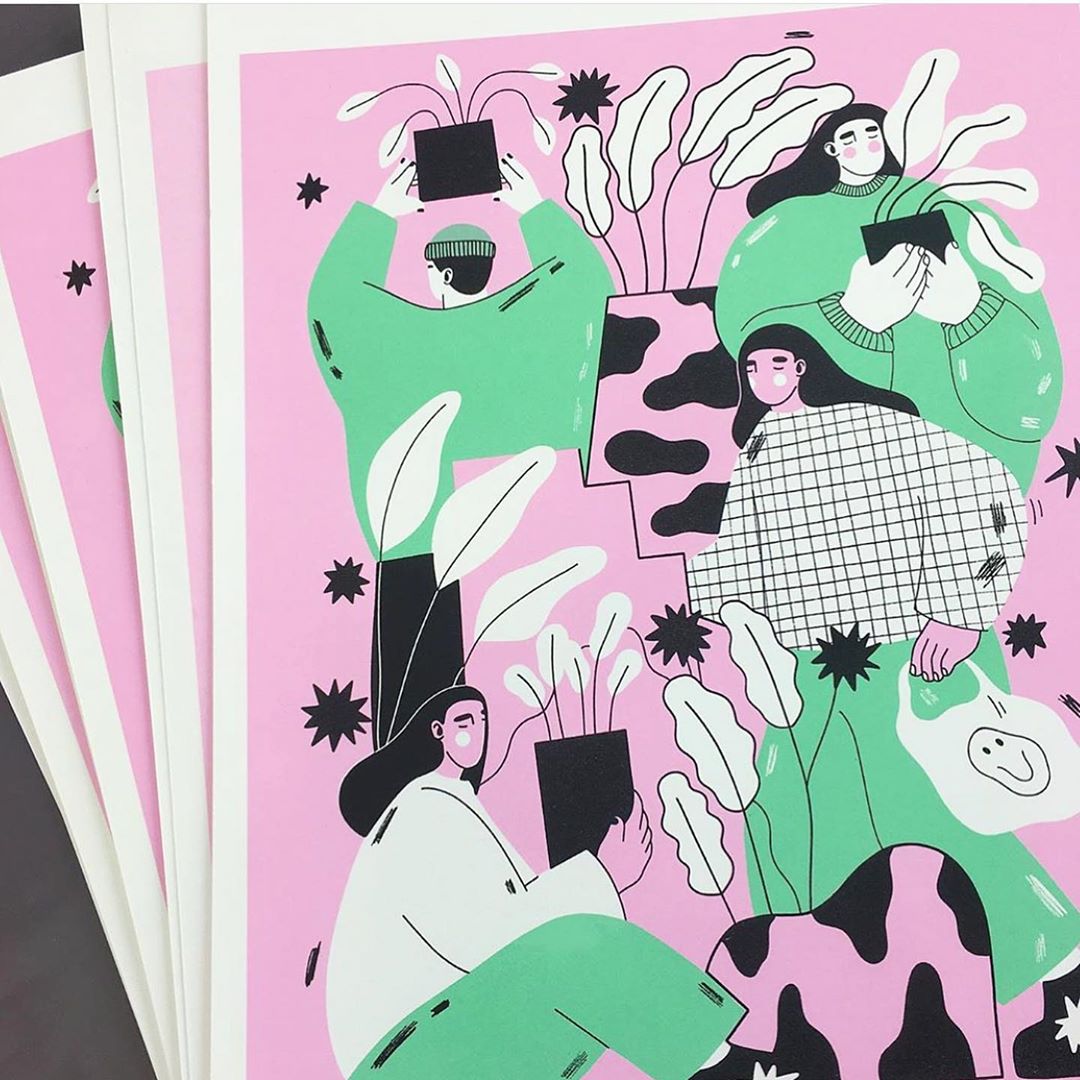
What do you think each person brings to the table?
P: I feel like we’re both pretty equal with what we bring to the table in terms of work; we bounce off each other’s ideas constantly. Miles is really good at offering me support on days where I’m having a really bad art block, or days where I start questioning my work and my ability! I find it really important to have that support.
M: Poppy will always offer useful constructive criticism when I’m struggling to move on with my ideas, or when I get stuck with what to do to improve my work! She’s also been doing freelance illustration for a little bit longer than me so she’s been really important in helping me get into it properly.
Do you work separately on any projects too now, how does this differ?
M: Most of the projects we work on together are individual projects, so it doesn’t really differ too much from before the collaboration!
P: This T-shirt collaboration is actually the first time we’ve properly worked together! So it’s more normal for us to be working on individual projects, but just in the same space as we live together.
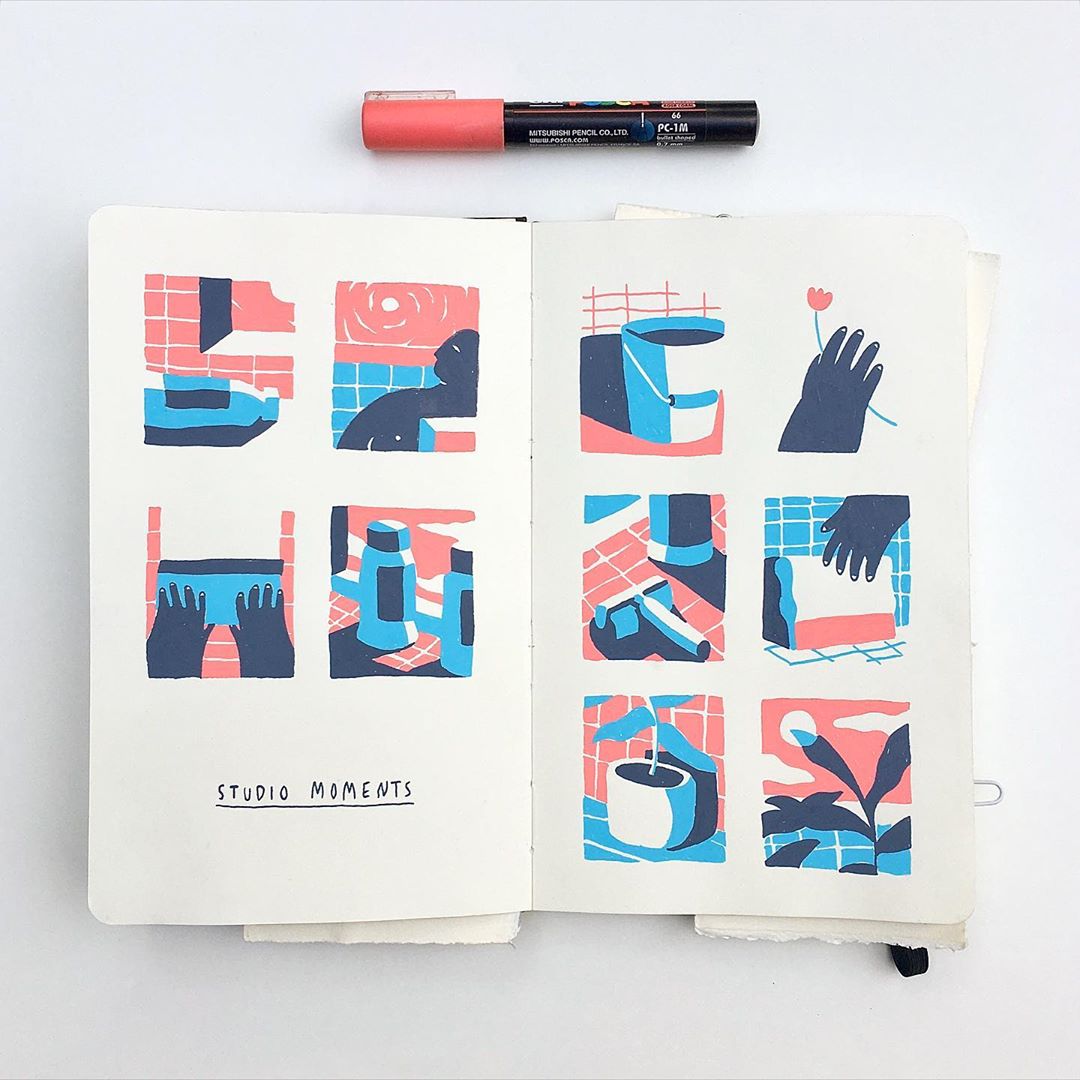
What tips would you have for any other couples setting out to collaborate?
Know when to take breaks while working! It’s definitely important for your relationship to have some separation between the collaboration and your personal life so it doesn’t get too overwhelming.
Try to find a balance
Listen to each other’s suggestions and try to find a balance between both of your work, even if it requires a compromise.
Have fun with it! Collaboration with someone you’re close to is exciting because it’s something you can do together, and it also makes you produce work you might not think to do otherwise.
How do you adapt your work for physical formats like T-shirts?
A lot of our work is made digitally or simplified into block colour layers so that it’s easy to turn into screen prints, which I think has helped to turn our work into T-shirt designs as simple designs seem to be a lot more successful! Screen printing is something we’re both into so I think that carries through our styles for other products we create.
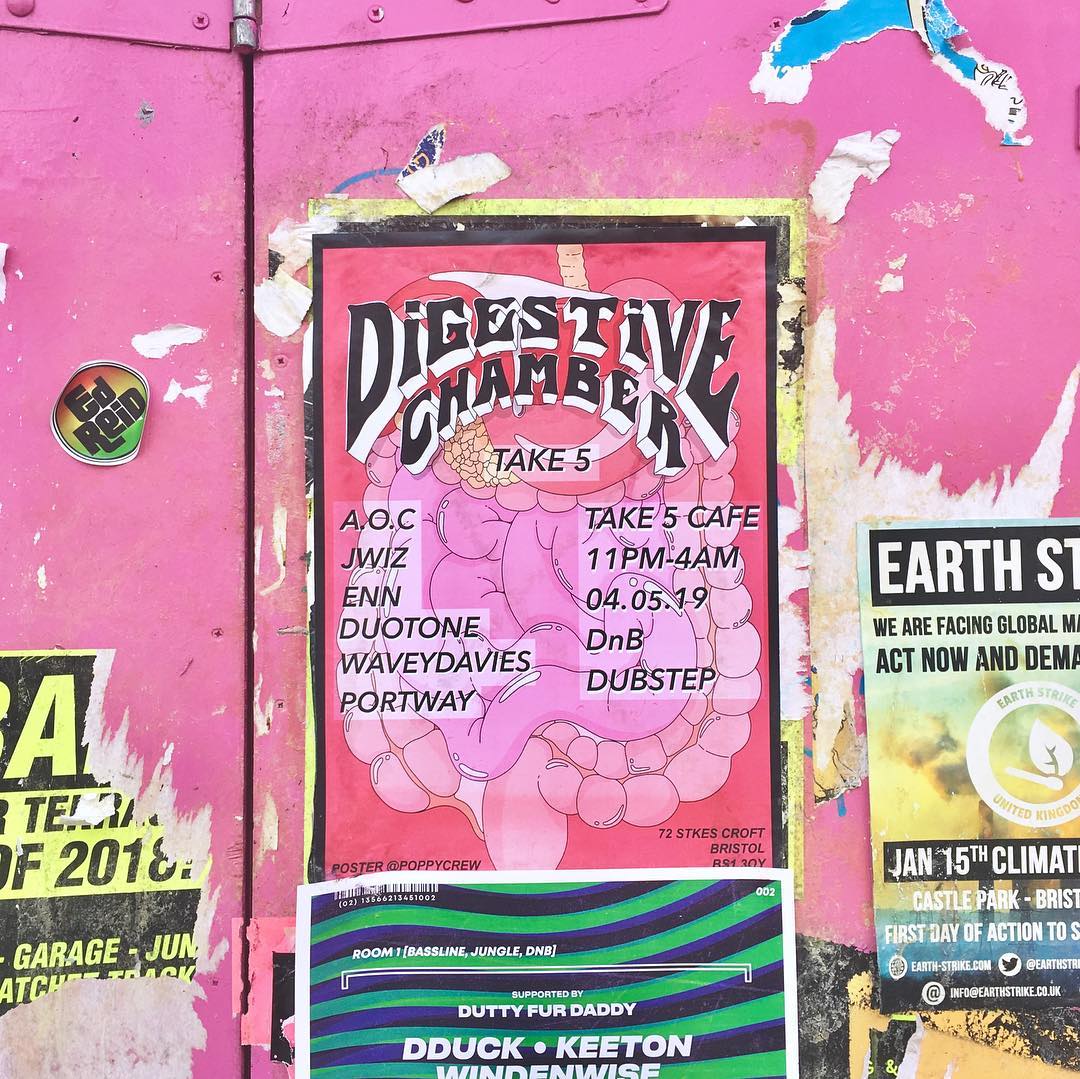
Read More: Collaborating For A Cause With Conor Clinch



